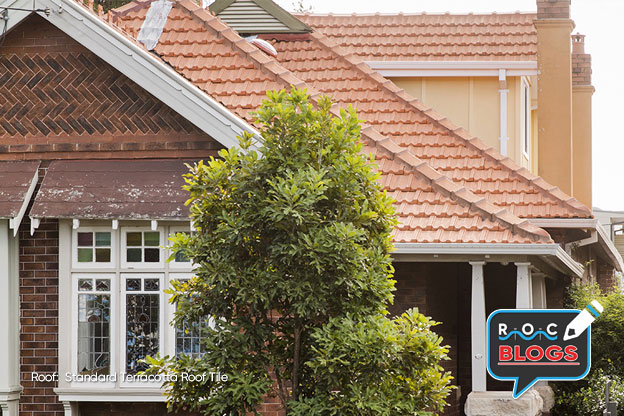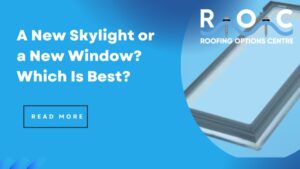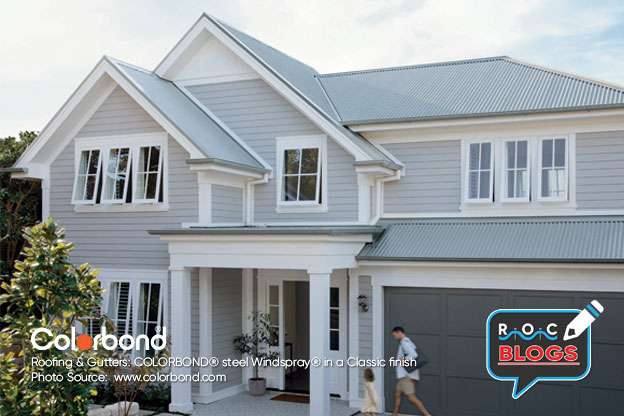
Tossing up between Colorbond and tiled roofs?
Whether you’re renovating or starting from scratch, choosing the right roof is one of the most important decisions that you can make. From material to colour, function, and aesthetic, there’s certainly a lot to weigh up.
In Australia, Colorbond and tiled roofs are two of the most popular options for home renovations and new builds. While both have their own set of benefits, it’s also important to understand the key elements of each structure before you settle and go ahead with installation.
Tiled surfaces have a long history in the roofing industry and have been used for centuries. In recent decades, however, Colorbond has quickly gained a reputation as one of the most cost-effective, durable and safe options on the Australian market.
So, should you invest in Colorbond steel or tile roofing? Throughout this article, we’ll delve into a comprehensive list of benefits and differences, making it easier for you to find the material that best suits your needs.
Colorbond Roofs
Manufactured by BlueScope Steel, Colorbond roofs are lightweight structures with a versatile range of applications. After being introduced more than 50 years ago, Colorbond has since become one of the most popular roofing materials in the country.
Purpose made for the Australian climate, Colorbond won’t peel, chip, or blister. As a result, it can maintain a smooth finish that lasts for decades. In addition, all of this steel is constructed in strict accordance with Australian Standards (AS1397 and AS/NZS 2728).
Unlike standard corrugated steel roofing that tends to rust easily, Colorbond’s five layers of protective coating stop corrosion in its tracks. This is another reason why it continues to represent some of the best value for money on the market today.
Tiled Roofs
In contrast to Colorbond steel, tile roofing is more a traditional form of roofing. In fact, it has been a popular option for local homes since the 1940s. Tiled surfaces are typically made from natural materials such as clay, concrete, or asphalt.
In the 1970s, tiles became the most popular roofing material in the country. Since this time, they have retained their place as a staple of the roofing industry, yet are now just one of many different options available.
Three common forms used in Australia are concrete tiles, terracotta tiles, and slate tiles. Due to their weight, tiles typically need strong support. from a solid base structure. Tiling also offers thermal efficiency during all seasons, as well as soundproofing properties for busy homes.
While they allow you to achieve a more rustic aesthetic, they can also be more heavy and prone to damage. For example, tiles may crack, break or need periodic regrouting.
Key Benefits of Colorbond Roofs
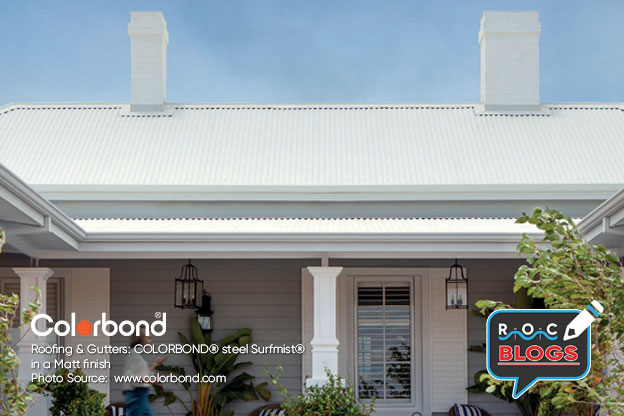
Colorbond uses steel combined with synthetic resin to create an exterior that is both durable and pleasing to the eye.
Let’s explore some of the other major benefits and advantages now.
1. Steel Protection
Colorbond metal roofing has a Zincalume core and a top layer of lead-free paint. With five layers of protection, this steel offers excellent bushfire, wind, and termite resistance.
2. Modern Styles
Colorbond steel roofing has a range of colours and aesthetics that allows you to mix and match styles. Popular contemporary colours include Monument, Basalt, Surfmist, Dune, Shale Grey and Dover White, whereas classic colours range from Classic Cream to Night Sky.
3. Low Maintenance
If the roof ever requires additional work or repairs, the steel sheets are unlikely to be the culprit. Colorbond steel roofing is smooth and sturdy, typically needing only as much as a quick rinse with fresh water every 6 months.
4. Thermal Efficiency
Colorbond roof sheets are ideal for thermal insulation. This feature helps the home retain heat, reflecting UV rays in summer, and absorbing them in winter. Colorbond is also an environmentally friendly option that can reduce electricity bills by making the home less reliant on heating and cooling systems.
5. Lightweight and Long-lasting
Colorbond is 90% lighter than tile roofing and therefore, easier to install. Opting for light is also a great way to save money on installation and ongoing maintenance costs. On the other hand, tile roofs are much heavier, requiring more labour and higher shipping costs.
With an average shelf life of more than 35 years, Colorbond flat sheets are both non-combustible and difficult to crack.
5 Layers Of Protection
If you live in Melbourne, you’ll know all too well how quickly the weather can shift and change. So, going for bonded paint that protects itself against dust, debris, and the elements can save you from serious property damage and subsequent repair costs.
Across the board, Colorbond roofs are renowned for providing excellent ongoing protection, even when faced with turbulent weather conditions.
What are these 5 layers of protection exactly?
- A steel base. Manufactured to suit strict Australian standards, this steel base adheres to the required grade and strength.
- A metallic coating. Including Activate® technology, this BlueScope steel can prevent corroding.
- A pre-treatment layer. Applied to the previous coating, this pretreatment layer can boost the adhesion of any additional coatings
- A primer. This inhibitive primer is baked onto the surface.
- A topcoat. As a topcoat that is specially formulated, is an exterior-grade paint that is baked, providing high resistance to chipping, blistering, and flaking.
Popular Colorbond Styles & Colours
Colorbond roofing is not only highly durable, but also available in a wide variety of different colours and styles, all of which come with excellent thermal capabilities. These include both Classic and Contemporary colour palettes.
Some of the most popular options include:
Classic
Woodland grey: A classic style, Woodland Grey is elegant and calm, versatile, and can enhance the look of other materials such as a dark timer. This is a popular colour for coastal, residential, and rural homes alike.
Classic cream: Warm and welcoming, Classic Cream is a reliable and rich yellow tone for any coastal, rural, or suburban home.
Night sky: Night Sky is a popular choice for highlighting, emphasising, and adding contrast or drama to modern homes.
Contemporary
Basalt: A rich and earthy shade, Basalt evokes a sense of strength and stability. Its deep charcoal hue makes it an excellent choice for contemporary architectural designs and urban aesthetics.
Monument: Sleek and sophisticated, Monument from Colorbond combines modern elegance with a dark charcoal black tone. This makes it a popular choice for creating bold contrasts and adding a touch of drama to exteriors.
Surfmist: Surfmist captures the essence of coastal living with a soft and delicate off-white shade. A Surfmist finish is perfect for creating a light and airy ambience that complements a wide range of architectural styles.
Ironstone: Characterised by its warm and rustic character, Ironstone has a deep grey-brown tone that resonates with natural landscapes and blends in seamlessly.
Benefits of Tile Roofs
With diverse designs, colour options, and unique textures, tiles have a more traditional look and feel when compared to Colorbond. In the right environment, tiled surfaces also have their own unique set of advantages.
Let’s explore some of them now:
1. Longevity
If you live near the coastline, tile roofs are robust enough to suit the salty sea air. On the flip side, concrete roof tiles can turn brittle if they are hit by extreme forces, such as powerful winds. Well-maintained tile roofs can last for up to 50 years, however, they may require regrouting or tile repair.
2. Thermal Insulation
Do you want to regulate indoor temperatures during the colder months? Concrete tiles are a great alternative if you live in a colder climate. Thanks to its in-built thermal insulation, tiled surfaces naturally help to regulate indoor temperatures. However, this can depend on the specific material and thickness of the tile itself.
3. Environmentally-friendly
As tile roofing is thick, concrete tiles work as effective sound insulation and help block loud noises. Likewise, if you’re an environmental enthusiast, tiles are made from natural materials and can be recycled. Therefore, tiles can be a viable way to lower your carbon footprint.
4. Versatility
If you have a particular architectural idea in mind, tile roofing comes in a variety of different colours, styles and materials. This flexibility can also mimic textures such as slate or wood, with combinations to suit an array of settings.
Common Tile Styles & Colours
What are some traditional design options for tile roofs? In comparison to a modern Colorbond aesthetic, tile roofing has an array of different textures.
Clay tiles. Traditional and historic-style homes are designed with clay tiles, including an array of browns, reds, and greys. If you want to learn more, the Australian Architecture & Design website is a resource for any building professional.
Terracotta tiles. Terracotta tiles mimic a Mediterranean style, don’t fade in colour, assist with energy usage, and prevent mould. These tiles come in earthy tones such as browns, reds, and oranges.
Concrete. Made from water and aggregate under high pressure, concrete roofing is usually more affordable than terracotta tiles. Easily able to replicate other materials such as wood or slate, you can choose neutral tones like beige, or go for a bold colour like blue.
Slate tiles. Slate tiles are a way of achieving a natural, sophisticated look, and are made from 100% natural stone. Readily available in green, black, purple, or grey, this roof style is one of the most expensive options due to needing specialist installation.
Disadvantages of a Tiled Roof
If weight, maintenance, longevity, and a modern look is your goal, a tile roof isn’t an ideal roofing option. Quality should always be a priority if you’re after a viable long-term investment!
1. They Often Require Additional Work
Although concrete roof tiles have some advantages in terms of style choices and upfront costs, they aren’t as powerful as Colorbond steel roofing.
A tile roof has an underlay that frequently needs replacing, and there are costs involved with adding this protection. Colorbond on the other hand, doesn’t need inspections or replacements. If you have an older home, it may be challenging to find a matching tile due to weathered colours or discontinued styles. This compromises your structural integrity.
2. Tile Roofs Shift From Impact
A tile roof can shatter from the pressure of high winds or being walked on. This can result in unavoidable leaks, gaps, cracks, or displacement of individual tiles.
If cracking isn’t addressed quickly, it can result in water entering the interior of your home. The impact from a fallen tree branch warrants immediate repair. They are also not suitable for all roof slopes, which may not work for your upcoming build.
3. Problematic Repairs
Whether you’re renovating or working on a new build, you want materials that are reliable, resistant, and won’t break the bank. Being more delicate than Colorbond steel, tiles run the risk of cracking during maintenance or casual repair projects. Therefore, tiled surfaces may come with greater ongoing costs, particularly if emergency repairs are needed.
4. Specialised Installation
Not all roofing professionals have the knowledge required to correctly install tiles. As a result, there will be higher costs that come with proper alignment, secure fitting, and attention to detail. With Colorbond, you won’t have to pay extra for the installation process.
Finding the Right Option
Your budget, architectural design, property structure, and end goals can all affect your choice of roofing. From here, it also comes down to personal preference.
Roof tiling is generally less expensive than steel, and is often suited to smaller projects. However, tiles are heavier, challenging to install, need more structural support, and require skilled tradespeople to get the job done to a high standard.
For this reason, Colorbond Roofing is generally a more convenient and cost-effective option. Although it can be a larger upfront investment, it becomes more affordable, safe, and easier to maintain over time.
Get Reliable Roofing Supplies in Melbourne
Tile roofing certainly has advantages, but it also has many drawbacks. This can include specialised installation, ongoing expenses, and materials that are prone to wear and tear. Colorbond, on the other hand, mitigates these concerns and offers you peace of mind from installation to the finishing touch.
At Roofing Options, our online store offers quality materials that can enhance the aesthetics of your roof, reduce home maintenance, and keep you protected against Australia’s unpredictable weather.
We also have stores in Coburg, Campbellfield, and Cranbourne, where you can get a first-hand look at the Colorbond range. Here, our knowledgeable staff are on hand to assist with any product questions or enquiries.
Contact us today for assistance with all of your roofing supplies and requirements.
